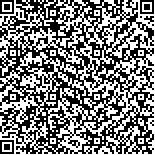| Quote
: |
赵澄,吴涛,卢芳国,王平,张香港,陈纯静,肖荣,李玲,魏科,宁毅.麻杏石甘汤对流感病毒感染小鼠肺组织CCL3、CCL25表达水平的影响[J].湖南中医药大学学报英文版,2020,40(10):1216-1220.[Click to copy
] |
|
| |
|
|
| This paper
:Browser 3372times Download 1750times |
| 麻杏石甘汤对流感病毒感染小鼠肺组织CCL3、CCL25表达水平的影响 |
| 赵澄,吴涛,卢芳国,王平,张香港,陈纯静,肖荣,李玲,魏科,宁毅 |
| (湖南中医药大学, 湖南 长沙 410208) |
| 摘要: |
| 目的 从肺组织趋化因子CCL3和CCL25蛋白表达水平探索麻杏石甘汤抗流感病毒的效应机制。方法 经鼻腔接种建立流感病毒肺部感染小鼠模型。实验设正常对照组、模型对照组、奥司他韦组、抗病毒口服液组、麻杏石甘汤组。各治疗组小鼠经灌胃给药3、7 d后以常规法检测体质量、肺指数;以HE染色法观察肺组织的病理变化;以Western blot法检测肺组织CCL3和CCL25的蛋白表达水平。结果 (1)与正常对照组比较,模型对照组小鼠体质量显著降低(P<0.01),肺指数显著升高(P<0.01)。与模型对照组比较,给药治疗3、7 d后,麻杏石甘汤组及其他药物组小鼠体质量显著升高(P<0.01),肺指数显著降低(P<0.05或P<0.01)。(2)与正常对照组比较,模型对照组小鼠肺组织充血水肿,大量淋巴细胞及巨噬细胞浸润。与模型对照组比较,给药治疗3、7 d后,麻杏石甘汤组及其他药物组小鼠肺组织病理损伤得到明显改善。(3)与正常对照组比较,模型对照组小鼠肺组织CCL3和CCL25蛋白表达水平显著升高(P<0.01);与模型对照组比较,给药治疗3 d后,麻杏石甘汤组及其他药物组小鼠肺组织CCL3和CCL25蛋白表达水平显著降低(P<0.05或P<0.01)。结论 麻杏石甘汤作为有效的抗流感病毒中药复方,能有效减轻肺部炎症,其可能是通过下调趋化因子CCL3和CCL25的表达水平而缓解流感病毒感染小鼠的肺部损伤。 |
| 关键词: 麻杏石甘汤 流感病毒 趋化因子 CCL3 CCL25 |
| DOI:10.3969/j.issn.1674-070X.2020.10.008 |
| Received:July 22, 2020 |
| 基金项目:国家自然科学基金项目(81774126,82074250,81973670,81803964);湖南省自然科学基金项目(2020JJ4063);长沙市杰出创新青年人才培养计划项目(2019-23);湖南省研究生创新课题(CX2018B481);湖南中医药大学中西医结合一流学科开放基金(2018ZXYJH20);湖南省高校科技创新团队《感染性疾病中医药防治研究》资助项目(NO:15);湖南中医药大学一流学科建设项目《基础医学》(NO:01)。 |
|
| Effects of Maxing Shigan Decoction on the Expression Levels of CCL3 and CCL25 in Lungs of Mice Infected with Influenza Virus |
| ZHAO Cheng,WU Tao,LU Fangguo,WANG Ping,ZHANG Xianggang,CHEN Chunjing,XIAO Rong,LI Ling,WEI Ke,NING Yi |
| (Hunan University of Chinese Medicine, Changsha, Hunan 410208, China) |
| Abstract: |
| Objective To explore the effect mechanism of Maxing Shigan Decoction against influenza virus from the expression levels of lung chemokine CCL3 and CCL25. Methods The pulmonary infection model of influenza virus was established by nasal inoculation. The experiment consisted of a normal control group, a model control group, an oseltamivir group, an antiviral oral liquid group, and a Maxing Shigan Decoction group. 3 days and 7 days after intragastric administration, the body mass and lung index were measured by conventional methods; the pathological changes of lung tissue was observed by HE staining method; and the protein expression levels of CCL3 and CCL25 in lung tissue were detected by Western blot. Results (1) Compared with the normal control group, the body mass of the mice in the model control group was significantly reduced (P<0.01), and the lung index was significantly increased (P<0.01). Compared with the model control group, the body mass of the mice in the Maxing Shigan Decoction group and other drug groups increased significantly after 3 and 7 days of treatment (P<0.01), and the lung index was significantly decreased (P<0.05 or P<0.01). (2) Compared with the normal control group, the lung tissue of the model control group was congested with edema, and a large number of lymphocytes and macrophages were infiltrated. Compared with the model control group, after 3 and 7 days of treatment, the pathological damage of the lung tissue of the mice in the Maxing Shigan Decoction group and other drug groups was significantly improved. (3) Compared with the normal control group, the expression levels of CCL3 and CCL25 protein in the lung tissues of the model control group were significantly increased (P<0.01). Compared with the model control group, the protein expression levels of CCL3 and CCL25 in the lung tissues of the Maxing Shigan Decoction group and other drug groups were significantly decreased after 3 days of drug administration (P<0.05 or P<0.01). Conclusion Maxing Shigan Decoction, as an effective anti-influenza virus Chinese herbal compound, can effectively reduce lung inflammation, which may be by down-regulating the expression levels of chemokines CCL3 and CCL25 to relieve the lung injury of mice infected with influenza virus. |
| Key words: Maxing Shigan Decoction influenza virus chemokine CCL3 CCL25 |
|

二维码(扫一下试试看!) |
|
|
|
|


